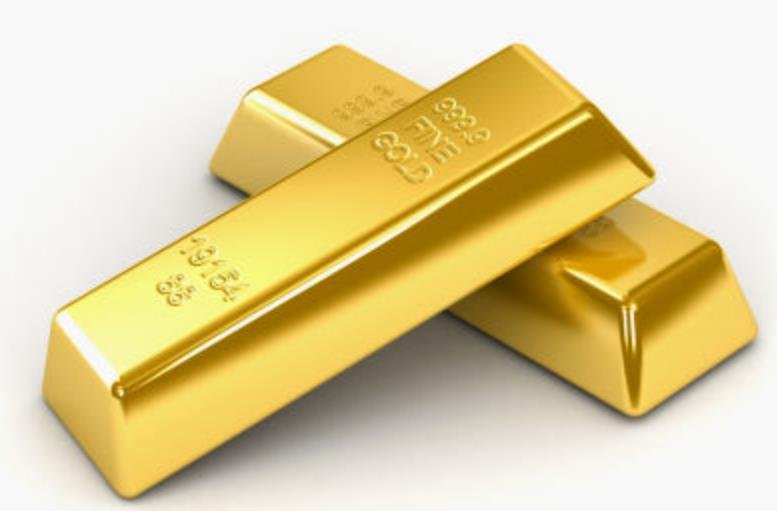Gold prices have experienced a pullback this month after reaching an all-time record high of $2,152 an ounce in December 2023. The precious metal has been under pressure from a surging US dollar, which has gained strength amid rising inflation expectations and hawkish signals from the Federal Reserve. However, some analysts believe that the recent dip in gold prices is a buying opportunity, as the underlying fundamentals remain bullish for the yellow metal.
One of the main drivers of gold’s rally in 2023 was the heightened geopolitical tensions in the Middle East, especially the ongoing conflict in the Red Sea. The strategic waterway, which connects the Mediterranean Sea with the Indian Ocean, has been the target of several attacks by Yemen-based Houthi rebels, who have threatened to block the passage of commercial vessels carrying essential commodities such as crude oil, liquefied natural gas, coal, base metals, softs and grains.

According to data compiled by GSC Commodity Intelligence, approximately 21,000 vessels annually pass through the Red Sea, carrying over $200 billion worth of commodities. The recent attacks by the Houthis have led to more than 90% of ships getting rerouted away from this critical route, forcing them to take a longer and more expensive detour around Africa’s Cape of Good Hope. This has pushed shipping costs up by more than 600%, hitting businesses hard with higher freight charges, longer lead times and a shortage of containers.
These factors have significantly increased the odds of a supply chain crisis similar to the one that snarled the global economy after the pandemic. In a note to clients, JPMorgan said that “the Red Sea crisis could have a wider domino effect on the supply chain if the situation is not resolved by end of the first quarter. A prolonged blockage could keep freight rates elevated beyond the first half of the year – which presents huge bullish tailwinds for the entire commodities complex”.
Gold, as a safe-haven asset, has benefited from the increased uncertainty and risk aversion in the markets, as investors seek to hedge against inflation, currency devaluation and geopolitical instability. Gold is also seen as a store of value in times of crisis, as it has a limited supply and does not depend on any government or central bank for its value.
Gold Faces Headwinds from a Stronger US Dollar and a Hawkish Fed
However, gold has also faced some headwinds from a stronger US dollar, which has appreciated against most major currencies in the past month. The US dollar index, which measures the greenback’s performance against a basket of six other currencies, has risen from 89.5 at the end of December 2023 to 92.3 as of January 17, 2024. A stronger US dollar makes gold more expensive for foreign buyers, reducing its demand and attractiveness.
The US dollar’s strength has been driven by rising inflation expectations and hawkish signals from the Federal Reserve, which has indicated that it may raise interest rates sooner than expected to combat inflationary pressures. The Fed’s latest dot plot, released in December 2023, showed that the median projection of the Fed’s policy makers was for three rate hikes in 2024, up from two in the previous forecast. The Fed also announced that it would accelerate the tapering of its monthly bond purchases, from $15 billion to $30 billion, starting in January 2024.
Higher interest rates tend to weigh on gold prices, as they increase the opportunity cost of holding the non-yielding metal and boost the yield and appeal of alternative assets such as bonds and stocks. Moreover, higher interest rates also support the US dollar, creating a negative feedback loop for gold.
Analysts See Buying Opportunity in Gold’s Pullback
Despite the recent pullback in gold prices, some analysts remain optimistic about the outlook for the precious metal, arguing that the fundamentals are still supportive and that the dip is a buying opportunity. They point out that the inflationary pressures are not likely to subside anytime soon, as the supply chain disruptions, the fiscal stimulus, the pent-up consumer demand and the rising energy costs will continue to push prices higher. They also note that the geopolitical tensions in the Middle East are not likely to ease, as the conflict in the Red Sea remains unresolved and the nuclear talks with Iran remain stalled.
Furthermore, they suggest that the Fed’s hawkish stance may be overdone, as the central bank may face some challenges in raising interest rates in a fragile economic environment, amid the emergence of new variants of the coronavirus and the potential backlash from the financial markets. They also argue that the US dollar’s strength may be temporary, as the greenback faces some structural headwinds such as the twin deficits, the political gridlock and the loss of reserve currency status.
